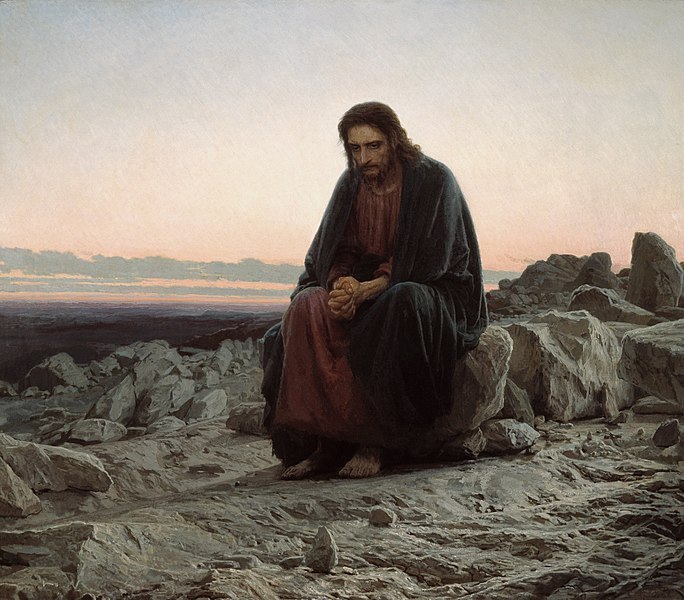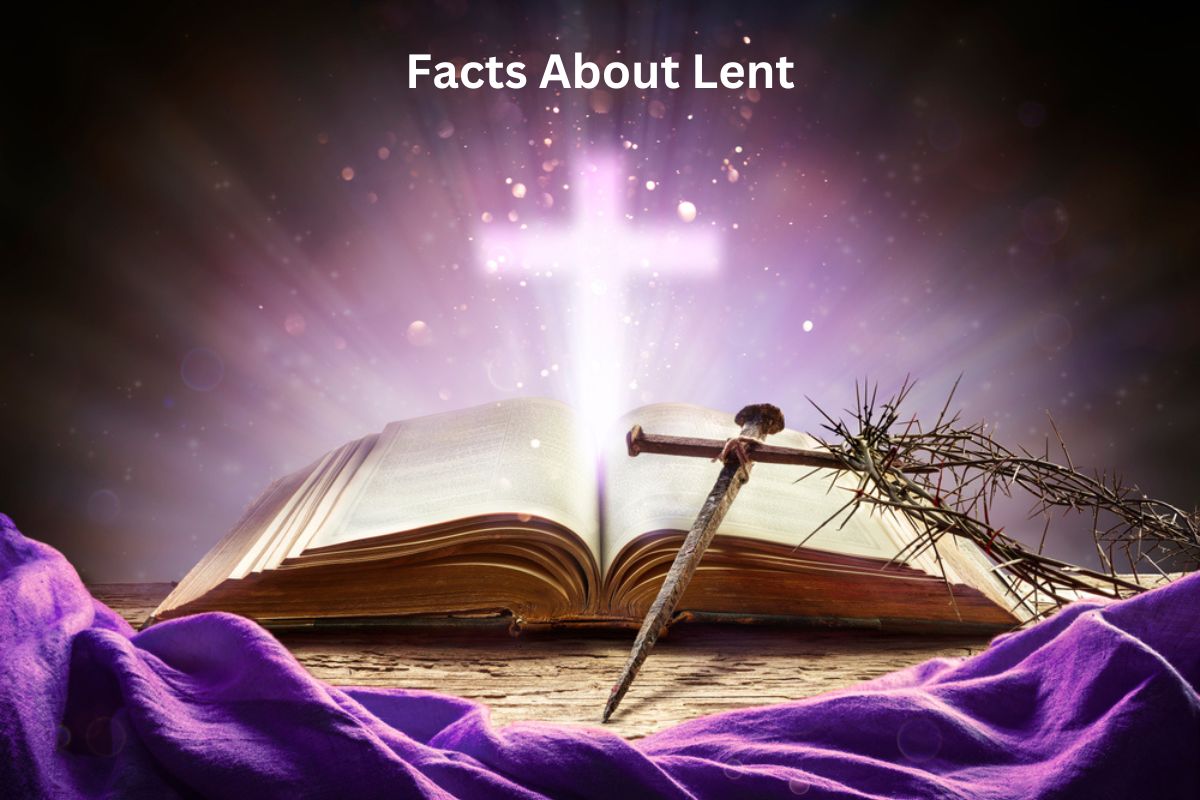Lent is a significant and solemn period in the Christian calendar that serves as a time of preparation and reflection leading up to Easter Sunday.
This observance lasts approximately 40 days, symbolizing the 40 days that Jesus spent fasting in the wilderness.
Lent begins with Ash Wednesday, involves practices like fasting and abstinence, and encourages penance and spiritual growth.
It is marked by the liturgical color purple and culminates in Holy Week, concluding with the joyous celebration of Easter, which commemorates the resurrection of Jesus Christ.
Lent Facts
1. Religious observance leading to Easter
Lent is a significant religious observance in the Christian calendar. It serves as a period of preparation and reflection leading up to Easter Sunday, the most important day in Christianity.
Also Read: Easter Sunday Timeline
Easter commemorates the resurrection of Jesus Christ from the dead, a central event that signifies the triumph of life over death and sin. Lent’s timing is carefully calculated to prepare believers spiritually for this momentous occasion.

2. Lasts approximately 40 days
Lent traditionally lasts for approximately 40 days, excluding Sundays. This duration is symbolic and mirrors the 40 days that Jesus spent fasting and praying in the wilderness, as described in the Gospels of Matthew, Mark, and Luke.
During this time, Christians are encouraged to engage in acts of self-discipline, reflection, and penance as a way to draw closer to God and prepare for the Easter celebration.
3. Symbolizes Jesus’ 40-day fast
The 40-day duration of Lent directly references Jesus’ period of fasting and temptation in the wilderness. According to the Gospels, Jesus retreated into the wilderness after his baptism and before beginning his public ministry.
Also Read: Jesus Timeline
During this time, he fasted and faced temptations from the devil. Lent encourages believers to emulate Jesus’ spiritual journey by engaging in various forms of self-denial, self-examination, and prayer.
It is seen as an opportunity for Christians to draw nearer to God and strengthen their faith, just as Jesus did during his 40 days in the wilderness.

4. Begins with Ash Wednesday
Lent officially commences with Ash Wednesday, which is the day after Shrove Tuesday (also known as Pancake Day).
On Ash Wednesday, Christians attend church services where they receive ashes on their foreheads in the shape of a cross. These ashes are typically made by burning palm branches from the previous year’s Palm Sunday celebrations.
The ashes symbolize both mortality (ashes to ashes, dust to dust) and penance, reminding believers of their need for repentance and forgiveness as they begin their Lenten journey.
5. Involves fasting and abstinence
Fasting and abstinence are common practices during Lent. Fasting often involves abstaining from specific foods, reducing meal sizes, or even fasting from food altogether for a designated period. Abstinence, on the other hand, typically involves refraining from certain indulgences or pleasures.
For example, many Christians abstain from eating meat on Fridays during Lent as a form of penance and reflection.
The specific fasting and abstinence practices can vary among different Christian denominations and even among individual believers, but the overarching goal is to cultivate self-discipline and spiritual growth.
6. Penitential season for reflection and growth
Lent is fundamentally a penitential season, meaning it is a time for believers to reflect on their sins, seek forgiveness, and undergo spiritual transformation. Christians often engage in acts of charity, prayer, and self-discipline to deepen their relationship with God.
This may include attending additional church services, participating in Bible studies, volunteering for charitable causes, and setting aside more time for personal prayer and meditation.
Lent encourages believers to confront their shortcomings and strive for greater holiness, with the ultimate aim of renewing their faith and preparing for the joyful celebration of Easter, when the resurrection of Jesus is commemorated.
7. Purple is the liturgical color
Purple is the liturgical color associated with Lent. It is a symbol of penance, humility, and mourning. The use of purple vestments, paraments, and decorations in churches during Lent underscores the somber and reflective nature of this season.
The color serves as a visual reminder to believers of the need for self-examination, repentance, and spiritual renewal. In some traditions, rose-colored vestments may be used on Laetare Sunday, the fourth Sunday of Lent, as a symbol of joy and anticipation amidst the penitential season.

8. Sundays are not counted in the 40 days
While Lent is traditionally a 40-day observance, Sundays are not included in this count. This exception is rooted in the celebration of the Resurrection of Jesus, which occurs on Easter Sunday.
Sundays are considered days of celebration and rejoicing in the Christian faith, so fasting and certain Lenten practices are often relaxed on these days. As a result, Lent technically extends for 46 days, but the six Sundays during this period are excluded from the penitential discipline.
9. Culminates in Holy Week
The final week of Lent is known as Holy Week, and it holds special significance for Christians.
Holy Week begins with Palm Sunday, commemorating Jesus’ triumphant entry into Jerusalem, and includes events such as Maundy Thursday (observing the Last Supper and the institution of the Eucharist), Good Friday (commemorating the crucifixion of Jesus), and Holy Saturday (a day of reflection and anticipation of Easter).
Each of these days has its own distinct liturgical observances and rituals, marking the final stages of Lent and leading into the Easter celebration.
10. Concludes with Easter Sunday celebration
Lent reaches its climax and conclusion with the celebration of Easter Sunday, which is the most important and joyous day in the Christian calendar.
On this day, Christians gather to celebrate the resurrection of Jesus Christ from the dead, signifying the victory of life over death and the redemption of humanity from sin.
The season of Lent, with its emphasis on repentance and spiritual growth, prepares believers to fully appreciate the significance of Easter and the hope it brings. Many churches hold special worship services, Easter egg hunts, and festive gatherings to mark this momentous occasion. It is a time of great joy and gratitude for Christians around the world.
